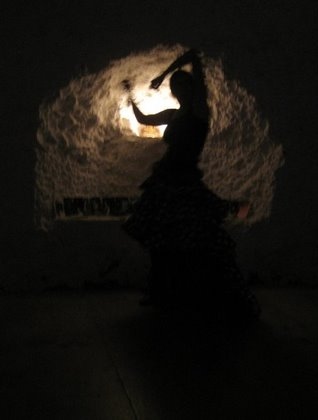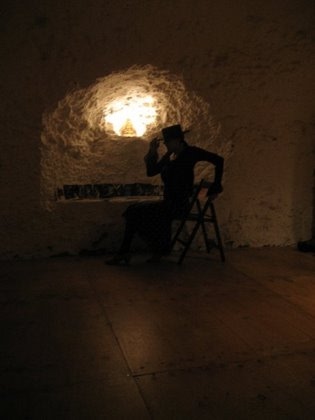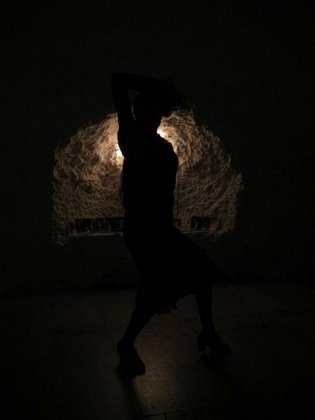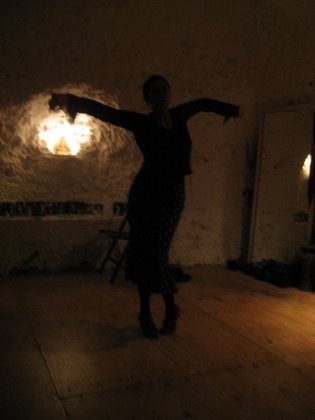Flamenco
has its roots in the melting
pot of Moorish, Jewish and
Christian cultures of
Andalusia, into which gypsies
entered five hundred years
ago. The gypsies brought with
them their own abundant
tradition of song and dance
from India, their original
home. Flamenco was a folk art
of the poor, and reflected the
hard, raw reality of life on
the margins of society. Love
and loss, grief and death are
typical themes of flamenco
song, but there is also a
light side, a joie de
vivre, love for the
family, the home, the earth,
and all the many details of
daily life.
being alive,
a love of family, home, land and
the simple details of daily
life.
In flamenco one senses a depth and rawness of feeling that is missing in the modern world. In recent years there has been an explosion of interest in flamenco all over the world. What is attracting so many people? It is true that flamenco today is great art. Flamenco guitar, in the hands of someone like Paco de Lucia, is surely comparable to the best of classical music; and flamenco dancers with the technique and sensitivity of Israel Galvan rank with the best of classical or contemporary dance. But it is not just artistic excellence that is drawing people to flamenco, nor is it just a passing fashion. What is really attracting people from all over the world to flamenco is passion!
“Enamerao de la vida aunque a veces duela” (“I'm in love with life though it sometimes hurts”) sings Cameron, one of the greatest flamenco singers, who knew better than anyone how to express the spirit of flamenco, a passionate celebration of the whole of life, including it’s most painful aspects. Passion is life felt deeply, courageously, without softening the intensity of either joy or pain. True passion is rare these days because our complex, busy modern lifestyle, our sophistication, comfort, security and endless variety of entertainment soften our encounter with life and lead to a shallowness and cowardice of heart.
Just as Blues was born amongst the black slaves of America, flamenco was born amongst people who did not have at their disposal the means to avoid human suffering, and had no choice but to pass through it with only their own inner strength to sustain them. The voice most prized in flamenco is not the sweetest or clearest voice, but “la voz desgarrada”, “the torn voice”, the expression of a heart torn open by suffering, wounded but not hardened, opened to feel the full intensity of the bitterness and beauty of life. When emotion is neither resisted nor avoided, but felt keenly and clearly and expressed as song or dance, it is transformed by its own fire into something else. This transformation, so hard to put into words, is the essence of flamenco. It is experienced by the artist and communicated to the audience. The tension builds up until it is unbearable, and then suddenly something snaps. Shivers run down your spine and for a moment you catch a glimpse of something at the other side of pain.



